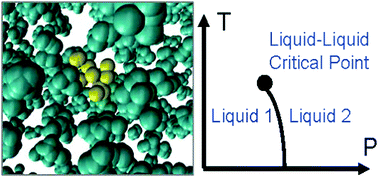Polyamorphic substances have the ability to exist in more than one liquid and/or glass states. Examples include water, silicon, and hydrogen. In many of these substances, nuclear quantum effects may become important in the proximity of the liquid–liquid and glass–glass transformation. Here, we study the nuclear quantum effects on a monatomic liquid that exhibits water-like anomalous properties and a liquid–liquid phase transition (LLPT) ending at a liquid–liquid critical point (LLCP). By performing path integral Monte Carlo simulations with different values of the Planck's constant h, we are able to explore how the location of the LLCP/LLPT in the P–T plane shifts as the system evolves from classical, h = 0, to quantum, h > 0. We find that, as the quantum nature of the liquid (as quantified by h) increases, and the atoms in the liquid become more delocalized, the LLCP pressure increases, the LLCP temperature decreases, and the LLCP volume remains constant. In addition, the crystallization temperature decreases with increasing h. For large values of h, the LLCP is not accessible due to rapid crystallization. The structure of the liquids studied at different values of h are also investigated.

